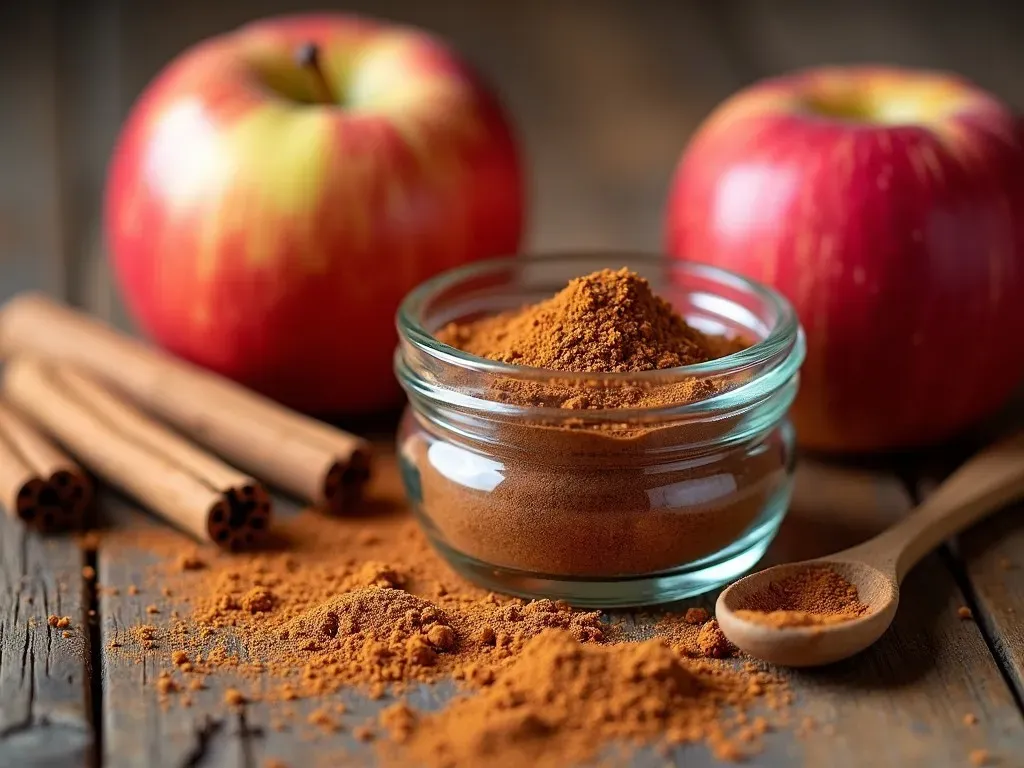Ground cinnamon, often referred to as cinnamon ground or ground cinammon, is a spice celebrated not only for its aromatic qualities but also for its numerous health benefits and culinary versatility. Derived from the inner bark of cinnamon trees, this rich, warm spice is a staple in kitchens all around the globe. Whether sprinkled on a latte, mixed into baked goods, or used as a seasoning in savory dishes, ground cinnamon is a must-have ingredient that can elevate both flavor and wellbeing.
The Nutritional Profile of Ground Cinnamon
Ground cinnamon is more than just a flavorful spice; it also packs a significant nutritional punch. Here’s a breakdown of its nutritional values per one teaspoon (2.6 grams) serving:
| Nutrient | Amount per tsp | % Daily Value |
|---|---|---|
| Calories | 6 | 0% |
| Total Fat | 0.1 g | 0% |
| Sodium | 0.5 mg | 0% |
| Total Carbohydrates | 2 g | 1% |
| Dietary Fiber | 1 g | 4% |
| Sugars | 0 g | – |
| Protein | 0.1 g | 0% |
Ground cinnamon is also rich in antioxidants. It includes compounds such as cinnamaldehyde, which offer various health benefits.
Health Benefits of Ground Cinnamon
Cinnamon offers more than just flavor. A growing body of research outlines its health benefits, which include:
1. Anti-Inflammatory Properties
Cinnamon contains powerful anti-inflammatory properties, which can help reduce general inflammation in the body, potentially lowering the risk of chronic diseases.
2. Antioxidant Powerhouse
Ground cinnamon is packed with antioxidants—compounds that help mitigate oxidative stress in the body. Antioxidants neutralize free radicals and can help shield the body from diseases.
3. Improved Insulin Sensitivity
Cinnamon has been shown to improve insulin sensitivity and lower blood sugar levels, making it beneficial for people with type 2 diabetes.
4. Heart Health
Studies suggest that cinnamon can reduce cholesterol levels and triglycerides while boosting good cholesterol (HDL), contributing to heart health.
5. Antibacterial and Antifungal Properties
Cinnamon inhibits the growth of bacteria and fungi, aiding in the prevention of infections.
Reference Video
Risks and Precautions
While ground cinnamon is generally safe for most people, it’s essential to consider the following:
-
Coumarin Content: Cassia cinnamon, the most commonly used type, contains coumarin, which can be harmful in high doses. Ceylon cinnamon is a safer alternative as it contains much lower levels.
-
Allergic Reactions: Some people may experience allergic reactions to cinnamon, leading to inflammation or irritation upon contact.
Safety Dosage
Most health experts recommend not exceeding 1 teaspoon of ground cinnamon (around 2.5 grams) per day.
How to Use Ground Cinnamon in Cooking
Ground cinnamon is incredibly versatile and can be incorporated into a wide array of dishes, enhancing both sweet and savory flavors. Here are some popular uses:
- Baked Goods: It’s ideal for cookies, cakes, and breads.
- Beverages: A dash can transform coffee, tea, and smoothies.
- Savory Dishes: Try it in chili, curry, or Moroccan dishes for an unexpected flavor twist.
- Oatmeal and Cereal: Sprinkle it on breakfast foods for added sweetness without sugar.
- Fruit Dishes: Use it with apples, pears, or even sweet potatoes for extra depth.

How to Store Ground Cinnamon
To maintain its freshness and potency, ground cinnamon should be stored properly. Follow these tips for optimal storage:
- Keep in a Cool, Dark Place: Exposure to light and heat can degrade its flavor and aroma.
- Use an Airtight Container: This will prevent moisture and pests from getting in.
- Check Expiry Dates: Ground cinnamon typically lasts for about 2-3 years. Check for potency by smelling; if it smells dull or flat, it’s time to replace it.
How to Make Your Own Ground Cinnamon
If you want to enjoy fresh ground cinnamon, consider making your own from cinnamon sticks. Here’s a simple method:
- Using a Spice Grinder: Place cinnamon sticks in a spice grinder and pulse until you achieve a fine powder.
- Mortar and Pestle: For a hands-on approach, use a mortar and pestle to grind the sticks into a fine powder.
FAQs about Ground Cinnamon
Q1: What is the difference between Ceylon and Cassia cinnamon?
Ceylon cinnamon, often referred to as “true cinnamon,” is considered sweeter and has lower coumarin levels, making it the healthier option. Cassia cinnamon is more commonly found and has a bolder flavor.
Q2: Can I use ground cinnamon instead of cinnamon sticks?
Yes, you can substitute ground cinnamon for cinnamon sticks. Generally, 1 stick equals about 1 teaspoon of ground cinnamon.
Q3: Is ground cinnamon safe during pregnancy?
Moderate use of ground cinnamon as a spice is generally considered safe. However, excessive amounts should be avoided. Always consult with a healthcare provider for personal dietary advice.
Q4: How much ground cinnamon should I take for health benefits?
A common recommendation is 1 teaspoon (2.5 grams) per day. However, it’s best to consult with a healthcare professional for personalized advice.
Q5: Where can I find organic ground cinnamon?
You can find organic ground cinnamon at health food stores, supermarkets, or online retailers. Always check for USDA organic certification.
Further Reading
For more detailed information regarding the health benefits of cinnamon, visit Healthline’s article.
Utilizing ground cinnamon as part of your daily regimen can enhance your culinary creations and promote better health. Its flavorful nature and potential health benefits make it a worthy addition to any diet. Enjoy exploring all the creative ways to incorporate this remarkable spice into your meals!

